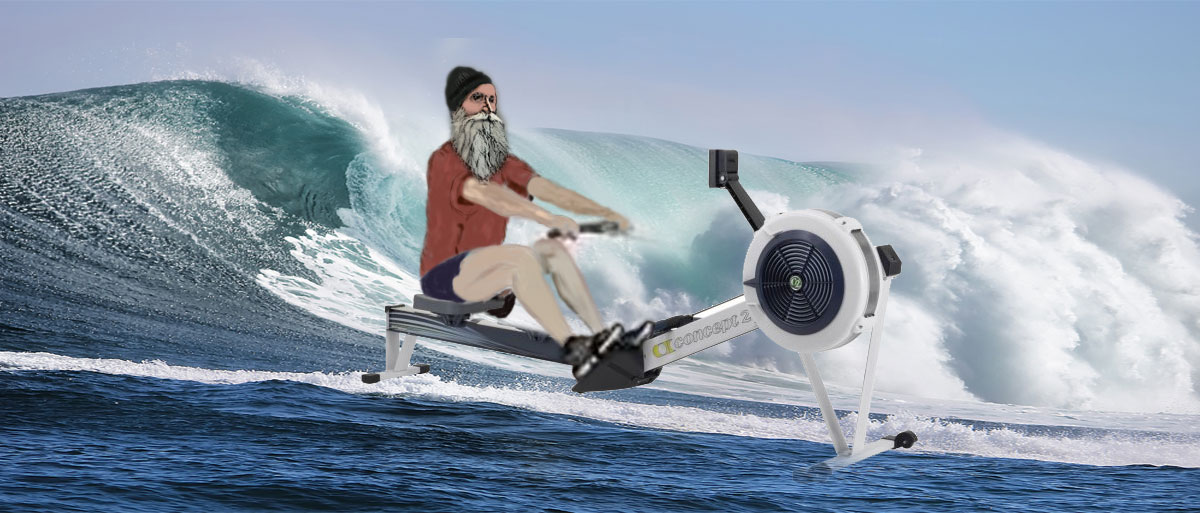
Yesterday a reader and fellow indoor rowing enthusiast commented and said he hopes I’ll continue blogging. So perhaps I will. But because it takes a lot of time, perhaps I’ll only post to this blog once in a while.
For days when I don’t post to this blog and if I do any rowing workouts, their data and graphs may be viewed at this link: my logbook at Concept 2.
For what seems like quite a while, I’ve been bothered by atrial fibrillation. A month ago (Christmas 2019) my wife gave me the gift of a book titled The Haywire Heart. When I opened the gift wrapping to discover that book inside, she remarked “You probably won’t like it.”
The focus of the book is about “How too much exercise can kill you and what you can do to protect your heart.” I looked through the book, read a few chapters and then told her that I liked it very much and that it is the best or one of the best Christmas presents she has ever given to me.
You would have to read the book yourself to appreciate it. It seems that if people indulge in too much high-intensity activity, a result can be that those people will develop atrial fibrillation or injure their hearts in other ways.
I have read somewhere that the most common cause of death for competitive rowers is heart failure.
If anyone has read the non-fiction book, “Born To Run,” by Christopher McDougall, the name “Caballo Blanco” is probably familiar as the name of one of the runners. Caballo Blanco’s name at birth was Micah True. He engaged in a lot of high-intensity, long duration running. And he died of heart failure.
So a simplistic way of summing up the message of the book, “The Haywire Heart” is that there can be too much of the good thing we call exercise. The challenge is to find out how much we can do before it is too much. 🙂
Some of the remedies or treatments for atrial fibrillation involve drugs, surgery and implanted devices which are connected to the heart. Some other possible solutions for atrial fibrillation involve “detraining” (reducing the duration and intensity of regular workouts) and discovering if the person is deficient in anything important such as iodide, magnesium or other things the body needs.
Enough of that for now. On to today’s workout: It consisted of a “detraining” session of 10,000 meters indoor rowing at 2:35.3/500 meters.
I started the “detraining” approach on December 31, 2019 by rowing 10,000 meters and ignoring pace while focusing only on heart rate and trying to keep heart rate at about 100 BPM. The average pace for that session turned out to be about 2:38/500 meters.
Since then, I’ve been rowing a 10,000 meter session daily and have increased the pace a bit. For the past few sessions I’ve been having atrial fibrillation before, during and after each session and so I have left the pace at 2:35.3/500 for each of those sessions and will only increase the pace by 1/10th of a second if and when the atrial fibrillation stops again.
Today’s session was uploaded to YouTube as a screen recording. For anyone who’d like to row-along with it, it will be available at this link: Indoor rowing 10K at pace of about 2 minutes 35 3/10 seconds per 500 meters
Screen shots of the 10K session report and graphs are below:


Happy rowing to you!
